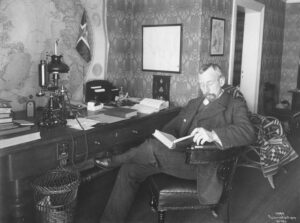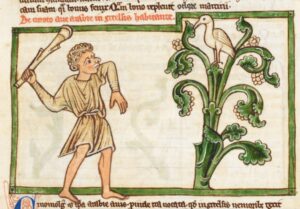It is 1916. Two motorcycles roar down 8,850km of road from New York to Los Angeles. Two riders clad in helmets, leather riding breeches, and military-styled outfits capture the American imagination while courting controversy. Augusta and Adeline Van Buren did not wish to live the conventional life. Instead, they lived to evoke change.
The Van Buren sisters — Augusta (born 1884) and Adeline (born 1889) — were supposed to be “society girls.” They were descendants of Martin Van Buren, the eighth president of the United States. Such a legacy must have been quite a weight.
Rather than learning the art of conversation, wearing fine clothes, and going to parties, they loved the outdoors. Both learned how to ride, to box — yes! — and were politically active, which was controversial at the time. Their era was one of immense change and volatility. The women’s suffrage movement was at its height, and the First World War raged in Europe. Women were entering the workforce. America had not yet joined the conflict overseas, despite international pressure to intervene.
Augusta and Adeline, forward-thinking and patriotic, sought to get a head start in bolstering the war effort. They believed that women should not sit idly by while their husbands and fathers laid down their lives on the battlefield. They found women capable of doing more active tasks, specifically driving to deliver messages for the military. Alas, although it was a good idea, the military did not care less.

Augusta Van Buren. Photo: Motorcycle Museum
‘Tough’ was an understatement
Often, the sisters’ ideas encountered scrutiny and ridicule. Strong-willed as they were, the pair set out to prove their point. They decided to show the world that they could withstand a tough motorcycle journey throughout the continental United States.
Their expedition began on 4 July 1916 from Sheepshead, New York. They spent the next 60 days on the road. Their 1000cc Indian motorcycles weighed over 400 pounds, had Firestone non-skid tires, a gearbox, a 2.5 gallon fuel tank, and cost almost $300 overall — about $8,600 today.
The term “tough” is an understatement. They encountered many problems on their journey, not only because dealing with their motorcycles required a lot of physical strength at times but also simply because of their gender. The police arrested them several times for wearing men’s clothes, which incredibly, was illegal back then.
At this time, America’s roads were underdeveloped and dangerous. Most were dirt and prone to damage by rain and erosion. Some went high into the Rocky Mountains and were almost inaccessible. The trip was so arduous that some nights, the girls fell asleep on their bikes and fell over while riding.
Once, they got lost in the deserts of Utah and Nevada without much water. Luckily, a passerby came to their aid. Despite the challenges, they claimed small victories. They became the first women to summit Colorado’s Pikes Peak by motorcycle.

Adeline Van Buren. Photo: Motorcycle Museum
Did they receive the recognition they earned? Yes and no. While many marveled and took photos with the intrepid sisters for local newspapers throughout America, many sought to tear down their success. Newspapers called their journey a “vacation” or an affront to “femininity.” At the end of their successful expedition, they applied for dispatch positions in the army, but they were still rejected.
Soon, the sisters went back to their lives. They did not attempt another expedition like this but lived their ordinary lives extraordinarily. Adeline became a lawyer and Augusta became a pilot. They both married.
Today, their names are inscribed in two Halls of Fame: the AMA Motorcycle Hall of Fame and the Sturgis Motorcycle Hall of Fame. Every decade, their modern descendants honor their legacy by retracing their ride from New York to Los Angeles.






